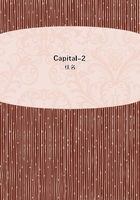
第66章
The part of the value added to the prices of commodities by the costs of transportation, other conditions remaining the same, is directly proportional to their cubic content and weight, and inversely proportional to their value. But there are many modifying factors. Transportation requires, for instance, more or less important precautionary measures, and therefore more or less expenditure of labour and instruments of labour, depending on how fragile, perishable, explosive, etc., the articles are. Here the railway kings show greater ingenuity in the invention of fantastic species than do botanists and zoologists. The classification of gods on English railways, for example, fills volumes and, in principle, rests on the general tendency to transform the diversified natural properties of goods into just as many ills of transportation and routine pretexts for fraudulent charges. "Glass, which was formerly worth £11 per crate, is now worth only £2 since the improvements which have taken place in manufactures, and since the abolition of the duty; but the rate for carriage is the same as it was formerly, and higher than it was previously, when carried by canal. Formerly, manufacturers inform me that they had glass and glass wares for the plumbers' trade carried at about 10 s. per ton, within 50miles of Birmingham. At the present time, the rate to cover risk of breakage, amount ... The companies always resist any claim that is made for breakages." [19] The fact that furthermore the part of the value added to an article by the costs of transportation is inversely proportional to its value furnishes special grounds to the railway kings to tax articles in direct proportion to their values. The complaints of the industrialists and merchants on this score are found on every page of the testimony given in the report quoted.
The capitalist mode of production reduces the costs of transportation of the individual commodity by the development of the means of transportation and communication, as well as by concentration -- increasing scale -- of transportation. It increases that part of the living and materialised social labour which is expended in the transport of commodities, firstly by converting the great majority of all products into commodities, secondly, by substituting distant for local markets.
The circulation, i.e., the actual locomotion of commodities in space, resolves itself into the transport of commodities. The transport industry forms on the one hand an independent branch of production and thus a separate sphere of investment of productive capital. On the other hand its distinguishing feature is that it appears as a continuation of a process of production within the process of circulation and for the process of circulation.
NOTES
[10] The bracketed text is taken from a note at the end of Manuscript VIII. -- F.E.
[11] "The costs of commerce, although necessary, must be regarded as an onerous outlay." (Quesnay, Analyse du Tableau Economique, in Daire, Physiocrates, Part I, Paris, 1846, p. 71.)According to Quesnay, the "profit" which the competition among merchants produces, in that it compels them to "content themselves with a smaller reward or gain...is, strictly speaking, nothing but a prevention of loss (privation de perte) for the seller at first hand and for the buyer-consumer.